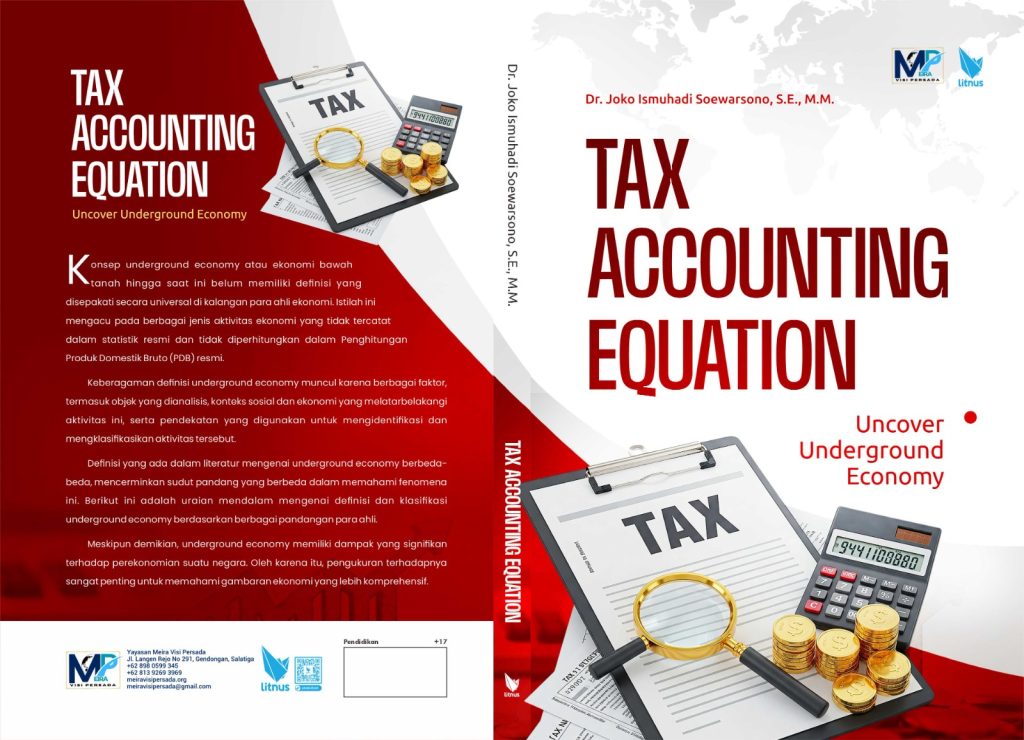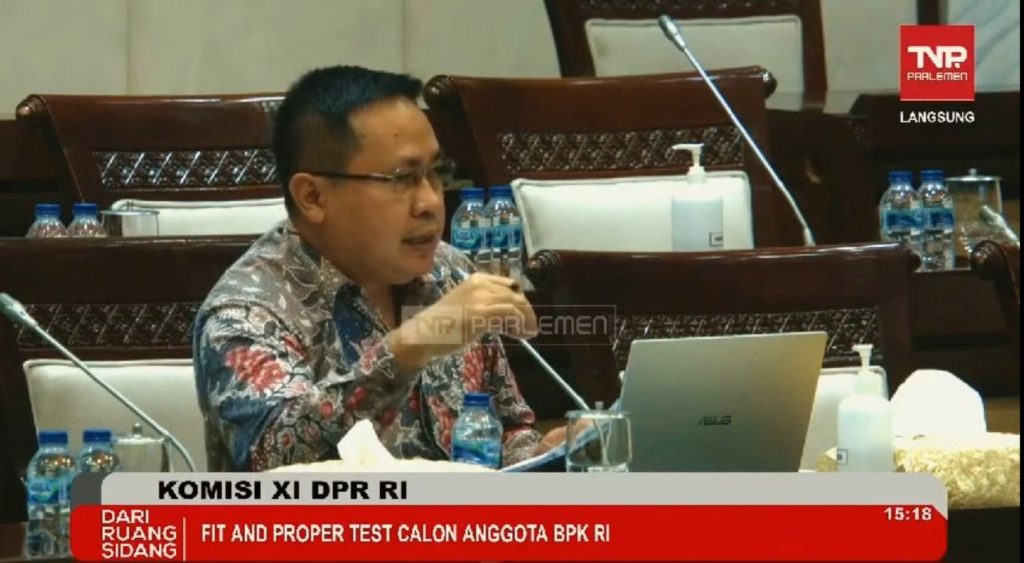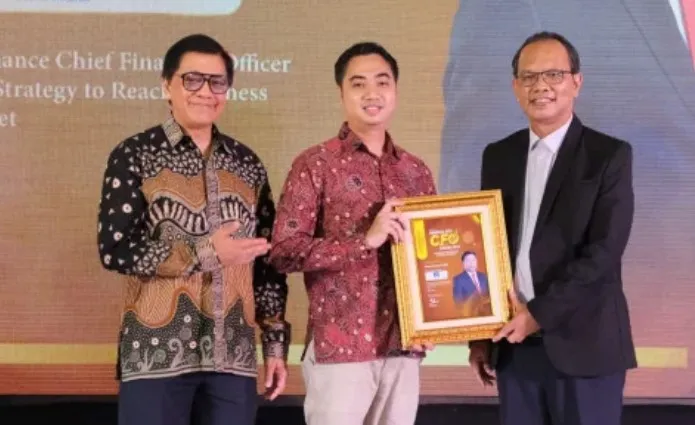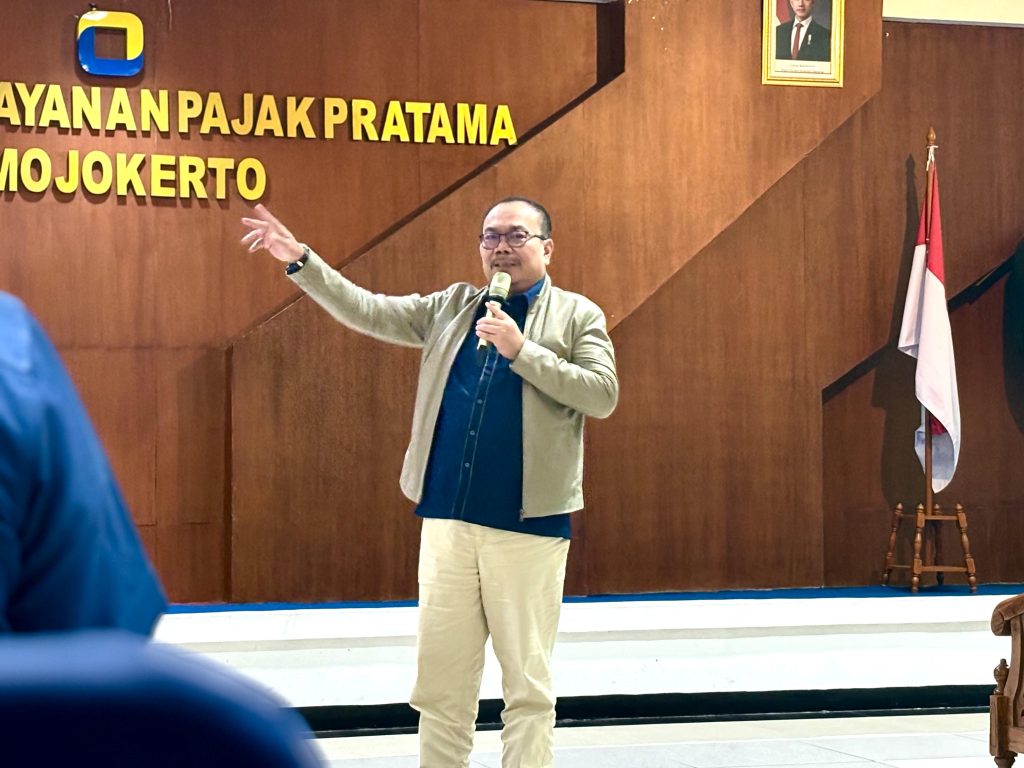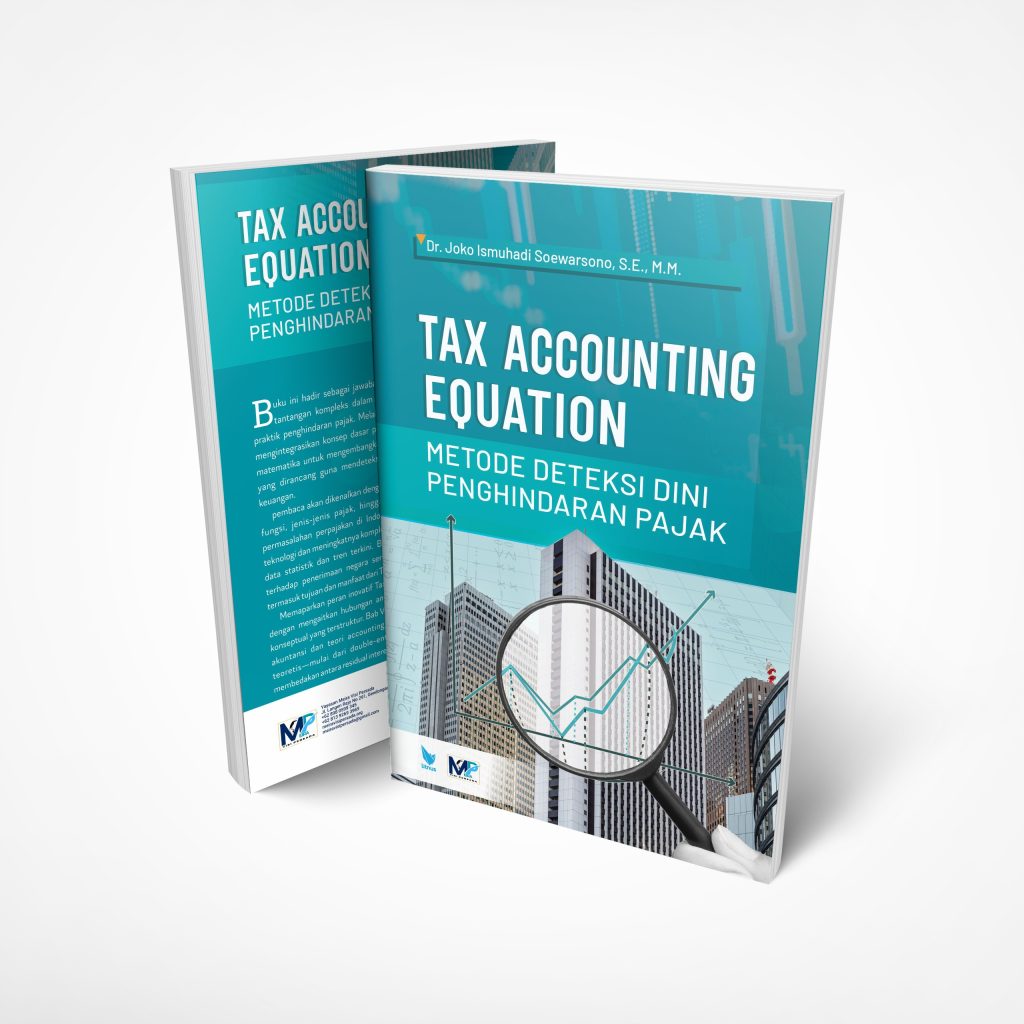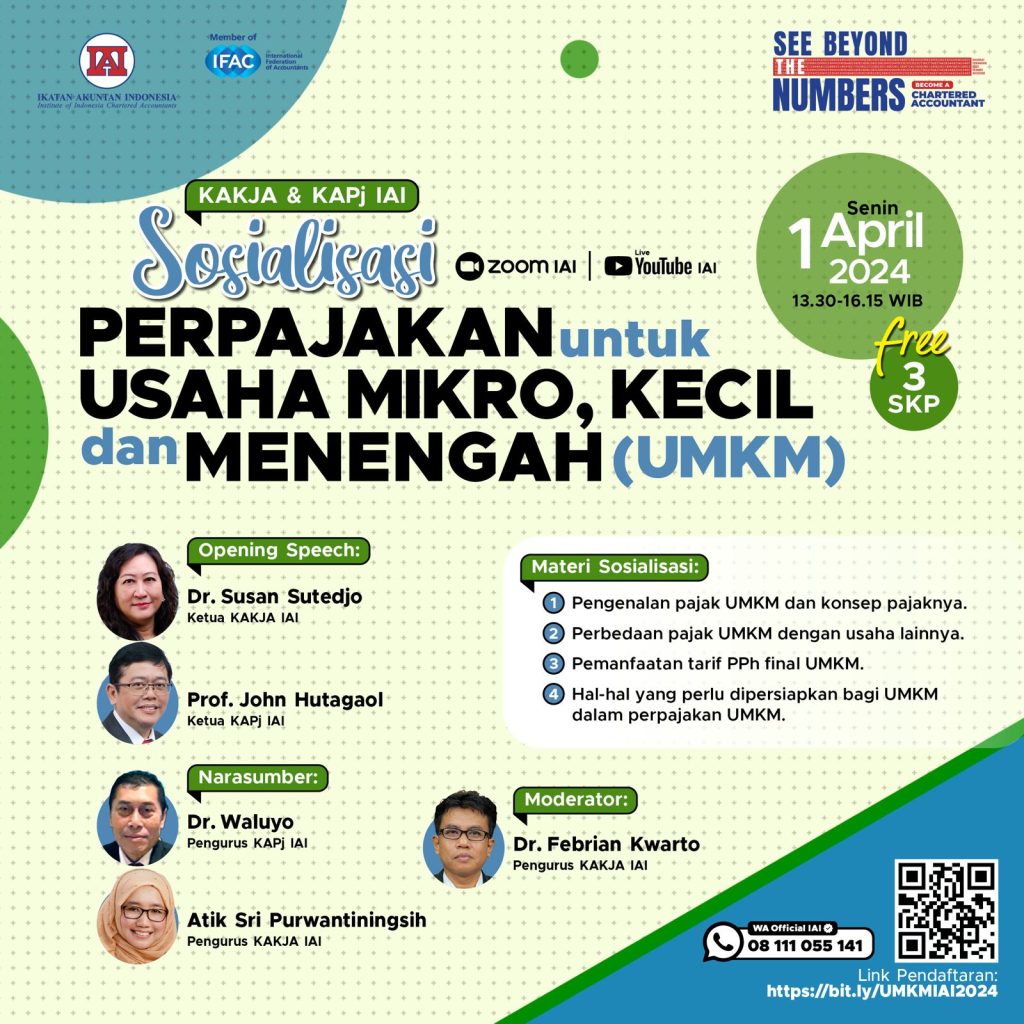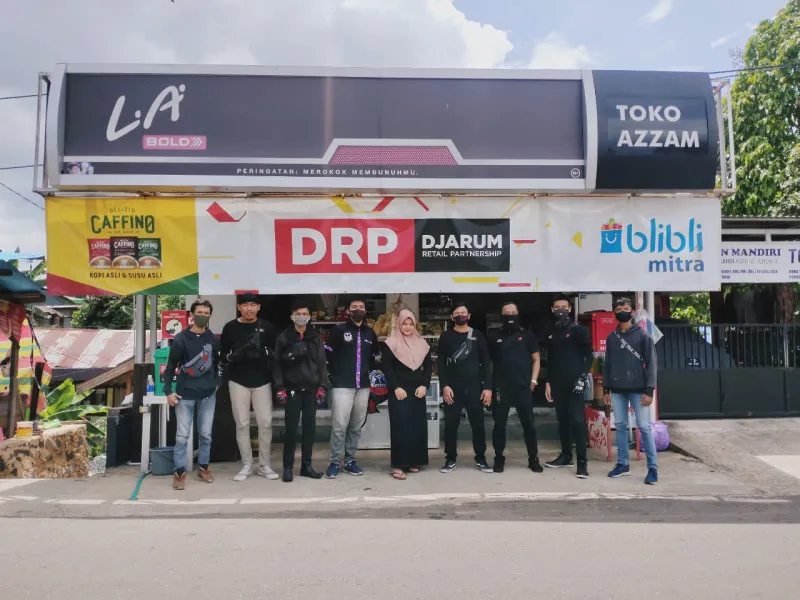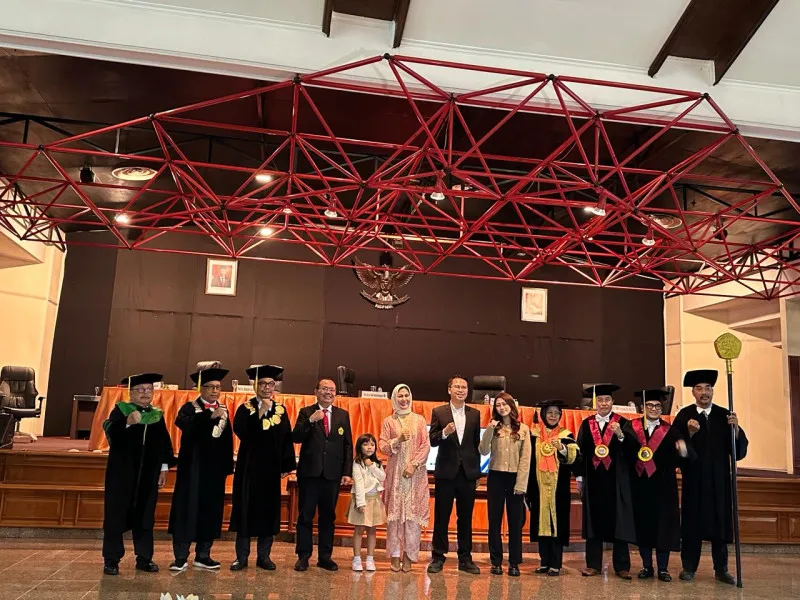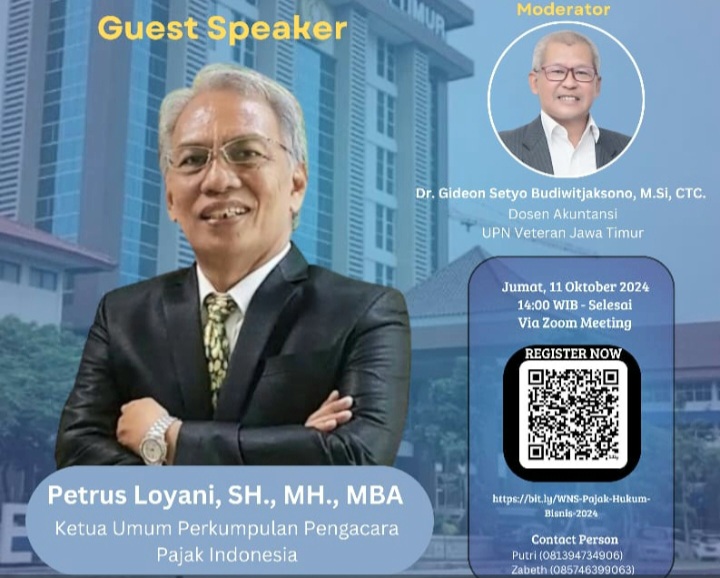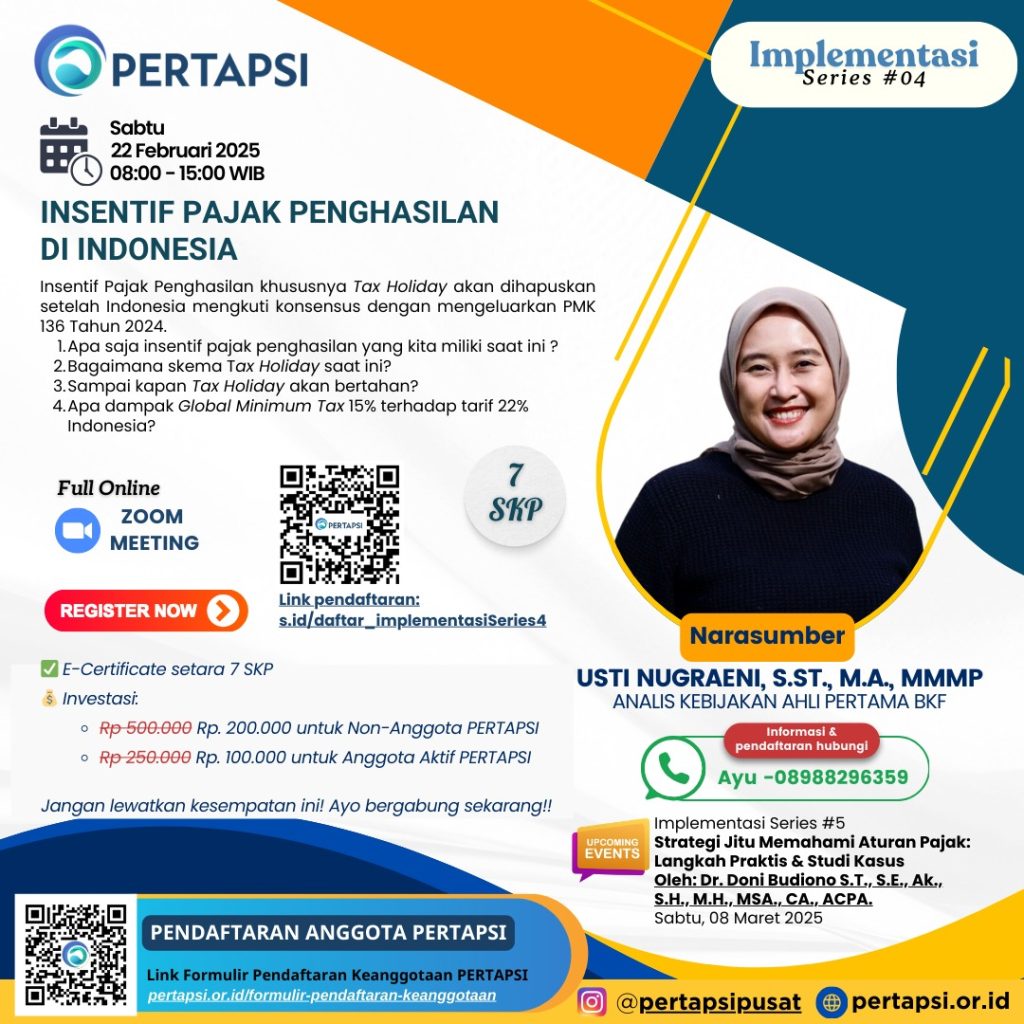
Elevating Indonesia’s Fiscal Capacity: A Holistic Integration of Tri Hita Karana and Ismuhadi’s Equation within Core Tax Administration for Indonesia Emas 2045
- Ekonomi
Saturday, 07 June 2025 09:52 WIB
Jakarta, fiskusnews.com:
Executive Summary
This report presents a strategic framework for significantly enhancing Indonesia’s national tax ratio, a critical enabler for achieving the ambitious “Indonesia Emas 2045” vision. The proposed approach advocates for a holistic integration of the Balinese philosophy of Tri Hita Karana with Dr. Ismuhadi’s Tax Accounting Equation (TAE) within a modernized Core Tax Administration System (CTAS) and Self-Assessment Monitoring System (SAMS). This synergy is designed to address both the technical gaps in tax compliance and the underlying cultural factors influencing tax morale and trust. By fostering a values-driven environment alongside forensic precision and technological efficiency, Indonesia can unlock its fiscal potential, accelerate economic development, and strengthen governance, paving the way for a sovereign, advanced, fair, and prosperous future by its centennial in 2045.
1. Introduction: Catalyzing Indonesia’s Fiscal Future Towards Emas 2045
1.1 The Vision of Indonesia Emas 2045: Economic Ambitions and Fiscal Foundations
Indonesia Emas 2045 (Golden Indonesia 2045) represents a profound national aspiration, envisioning Indonesia as a sovereign, advanced, fair, and prosperous nation, poised to rank among the world’s top five economies by its centennial independence in 2045. This long-term vision, formulated by the Ministry of National Development Planning and launched by President Joko Widodo in 2019, sets forth ambitious economic targets, including a nominal GDP of USD 9.8 trillion and a Gross National Income (GNI) per capita of USD 30,300, with an 80% middle-income population and a 28% contribution from the manufacturing industry to GDP. Achieving these goals necessitates a sustained annual economic growth rate of 6-7%.
The vision is underpinned by four fundamental pillars: human development and the mastery of science and technology, sustainable economic development, equitable development, and strengthening national resilience and governance. These pillars align intrinsically with the preamble of the 1945 Constitution, which outlines national goals such as promoting general welfare and enlightening national life.
A robust fiscal foundation, primarily driven by efficient tax revenue mobilization, is indispensable for realizing Indonesia Emas 2045. Significant public investment in critical infrastructure, high-quality human resource development, and essential public services is required to fuel this transformative journey. The ambitious economic targets, such as becoming a top-tier global economy and achieving high GDP/GNI per capita, inherently demand a substantially higher tax ratio. Without adequate financial resources, the government’s capacity to fund the necessary development initiatives for Indonesia Emas 2045 would be severely constrained. Therefore, increasing the tax ratio transcends a mere fiscal objective; it is a foundational economic and strategic imperative, directly linking tax policy to the nation’s long-term prosperity and global standing.
1.2 Indonesia’s Tax Ratio: Current Landscape, Challenges, and the Imperative for Growth
Indonesia’s tax ratio, which measures total tax revenue relative to Gross Domestic Product (GDP), stood at 10.02% as of October 2024, a slight improvement from 10.21% in 2023. While this indicates some progress, it remains below the government’s ambitious target of 11.2%-12% by 2025. Critically, this figure is notably low when compared to regional averages and significantly lags behind the OECD average, which often exceeds 30%. A higher tax ratio generally signifies a more resilient taxation system and an enhanced governmental capacity to invest in economic growth and social welfare. It also serves as an indicator of the economic relationship between the government and its citizens.
The persistent low tax ratio in Indonesia is attributable to several complex challenges. These include a substantial informal sector, estimated to constitute between 21.76% and 30-40% of the GDP, which largely operates outside the formal tax system. Limited tax compliance, administrative inefficiencies, and a pervasive lack of taxpayer trust, often stemming from perceptions of corruption and inefficient public spending, further exacerbate the issue. Empirical data suggests that the estimated rate of tax evasion among formal firms in Indonesia is approximately 25%, resulting in substantial revenue losses equivalent to about 2% of the nation’s GDP.
The enduring low tax ratio is not merely a technical collection problem but is deeply rooted in a crisis of trust and a cultural disconnect concerning civic responsibility. Tax morale, defined as a citizen’s intrinsic motivation to pay taxes even when enforcement is weak, is notably low in Indonesia. This low morale is strongly correlated with widespread perceptions of corruption and inefficient public spending, which erode trust in government institutions. Accounts from taxpayers indicate reluctance to comply voluntarily and honestly due to concerns that taxes paid may not be utilized properly, but rather for personal benefit by tax officials. This suggests that compliance is often driven by the fear of penalties rather than genuine self-awareness or civic duty. The administrative inefficiencies and limited tax compliance observed are therefore symptoms of a deeper cultural and trust issue, where taxpayers are not only lacking awareness but are unwilling to comply voluntarily because they perceive the system as unfair or corrupt. This fundamental lack of trust directly reduces voluntary compliance, rendering enforcement-heavy approaches less effective in the long run. Consequently, any effective strategy to increase the tax ratio must comprehensively address this trust deficit.
1.3 A Holistic Approach: Integrating Philosophy, Forensics, and Modern Administration
To overcome these multifaceted challenges, a comprehensive and integrated approach is imperative. This report proposes a synergistic model that combines the ethical framework of the Balinese Tri Hita Karana philosophy, the forensic precision of Dr. Ismuhadi’s Tax Accounting Equation, and the technological backbone of Indonesia’s modernized Core Tax Administration System (CTAS) complemented by a Self-Assessment Monitoring System (SAMS). This multi-layered integration aims to foster both voluntary compliance through enhanced trust and ethical conduct, and effective enforcement through advanced detection and efficient administration. Such a holistic strategy offers a unique pathway to fundamentally transform Indonesia’s tax landscape and accelerate its progress towards the Indonesia Emas 2045 vision.
2. Foundational Pillars: Tri Hita Karana and Ismuhadi’s Equation
2.1 Tri Hita Karana: Balinese Philosophy for Ethical Governance and Societal Harmony
Tri Hita Karana (THK) is a traditional Balinese philosophy that underscores the importance of maintaining harmonious relationships across three fundamental domains: Parahyangan, Pawongan, and Palemahan. This philosophy offers a holistic framework for ethical decision-making and societal well-being.
- Parahyangan emphasizes the harmonious relationship between humans and God, fostering spiritual piety and accountability. In the context of tax governance, this principle strengthens spiritual accountability in financial reporting, promoting a higher sense of responsibility and honesty within government institutions regarding fiscal matters. It suggests that fulfilling tax obligations can be viewed as an intrinsic act of devotion and concern for the state and community.
- Pawongan focuses on the harmonious relationship between humans and their fellow beings, promoting social harmony and collaboration. Applied to tax administration, this principle can enhance collaborative oversight and mutual cooperation between taxpayers and tax authorities. This fosters compliance through shared responsibility rather than solely through coercive measures.
- Palemahan pertains to the harmonious relationship between humans and nature, encouraging environmental stewardship and sustainable decision-making. While its direct application to tax compliance may be less immediate, it underpins a broader ethical environment for public service and resource management, reducing corruption linked to misuse of resources.
The principles of THK are deeply embedded in daily Balinese life, manifesting in religious activities, mutual cooperation (known as gotong royong), and environmental management practices. Furthermore, THK is actively integrated into the education system to cultivate character, fostering individuals with balanced intellectual, social, and spiritual intelligence.
Tri Hita Karana provides a culturally resonant framework to address Indonesia’s fundamental challenge of low tax morale and distrust. The persistent struggle with low tax morale, driven by a lack of trust in government and perceptions of corruption, leads to compliance often being penalty-driven rather than voluntary. By emphasizing Parahyangan (spiritual accountability) and Pawongan (social harmony), THK offers a pathway to cultivate an intrinsic motivation for tax compliance as a form of civic devotion and community contribution. This directly counters the prevailing reliance on external enforcement and fear of penalties. Moreover, Pawongan can foster collaborative oversight and trust between citizens and the state. By integrating THK, the tax system can tap into deeply ingrained cultural values to rebuild trust and foster voluntary compliance, moving beyond purely formal enforcement mechanisms, which are often perceived as temporary or coercive. This approach lays a more sustainable and ethical foundation for tax collection.
The following table summarizes the application of Tri Hita Karana principles in the context of tax governance:
Table 1: Tri Hita Karana Principles and Their Application in Tax Governance
| Principle | Core Meaning | Relevance to Tax Governance/Compliance |
|---|---|---|
| Parahyangan | Harmony with God | Fostering spiritual accountability in financial reporting; promoting intrinsic honesty and responsibility in tax matters as a form of devotion to the state and community. |
| Pawongan | Harmony with Fellow Beings | Enhancing collaborative oversight and mutual trust between taxpayers and tax authorities; improving compliance through shared responsibility and community engagement. |
| Palemahan | Harmony with Nature | Promoting sustainable resource management and ethical decision-making in public finance; reducing corruption linked to resource misuse. |
2.2 Ismuhadi’s Tax Accounting Equation (TAE): A Forensic Tool for Enhanced Tax Compliance
Dr. Joko Ismuhadi, an Indonesian tax specialist, developed the Tax Accounting Equation (TAE) as an innovative forensic accounting tool specifically designed to detect financial irregularities and tax evasion within the Indonesian context. This tool addresses the limitations of the basic accounting equation, which, while foundational for understanding a company’s financial position, is often insufficient to uncover the intricate and concealed methods employed in sophisticated tax evasion.
TAE is presented in two interrelated mathematical formulations:
- Revenue – Expenses = Assets – Liabilities
- Revenue = Expenses + Assets – Liabilities
These formulations represent a strategic rearrangement of the basic accounting equation, placing a deliberate emphasis on revenue as a crucial indicator of a company’s economic activity and its corresponding tax obligations. By focusing on the relationship between a company’s profitability (as reflected in the income statement through Revenue – Expenses) and its net worth (as shown on the balance sheet through Assets – Liabilities), TAE provides a more targeted lens for identifying potential tax irregularities, particularly since underreporting income is a common tactic in tax evasion.
Furthermore, for specific scenarios where taxable income might be intentionally reported as zero or negative to minimize tax liabilities, Dr. Ismuhadi also formulated the Mathematical Accounting Equation (MAE):
- Assets + Dividen + Beban = Kewajiban + Ekuitas + Pendapatan (Assets + Dividends + Expenses = Liabilities + Equity + Revenue). This equation refines the analytical approach to address situations where income statement manipulation might not be the primary method of tax avoidance.
The primary purpose of TAE is to establish an expected equilibrium between key financial reporting components and a company’s tax obligations. Significant deviations from these anticipated relationships serve as clear indicators of potential tax avoidance or fraudulent activities. Its applications are diverse and impactful:
- Early detection of tax avoidance schemes: By analyzing financial statements through the lens of TAE, tax officials can identify inconsistencies that suggest intentional misreporting of revenue or expenses.
- Risk assessment: Significant variances from the expected relationships defined by TAE can serve as red flags, directing audit efforts towards entities with a higher risk of tax evasion, thereby optimizing resource allocation.
- Uncovering hidden economic activity: TAE provides insights into the scale and nature of the underground economy by identifying discrepancies between reported financial data and expected tax obligations.
- Data quality assurance: Imbalances in TAE calculations can highlight errors in financial data recording, misclassification, or inconsistencies in accounting principles, thereby improving data accuracy and consistency.
TAE’s relevance is particularly pronounced in Indonesia, as it was developed by an Indonesian tax expert with a deep understanding of the country’s specific financial and regulatory landscape, including the prevalence of the underground economy and various tax evasion tactics.
Ismuhadi’s Equation serves as a critical technical countermeasure to the challenges posed by Indonesia’s large informal sector and limited tax compliance, which contribute to substantial revenue losses. Traditional accounting equations are inherently insufficient for detecting sophisticated tax evasion tactics. TAE directly addresses these limitations by focusing on revenue relationships that are frequently manipulated in evasion schemes. By providing a mathematically rigorous framework, TAE significantly enhances the ability of tax authorities to detect underreporting and hidden economic activity. This directly tackles the issues of limited tax compliance and the informal sector by making evasion more difficult to conceal. In essence, TAE transforms tax enforcement from a reactive, random audit-based approach to a proactive, data-driven methodology, which is essential for effectively closing the tax gap and increasing the national tax ratio.
The following table provides a comparison between the basic accounting equation and Ismuhadi’s Tax Accounting Equation:
Table 2: Comparison of Basic Accounting Equation vs. Ismuhadi’s Tax Accounting Equation
| Feature | Basic Accounting Equation | Tax Accounting Equation (TAE) | Mathematical Accounting Equation (MAE) |
|---|---|---|---|
| Formula | Assets = Liabilities + Equity | Revenue – Expenses = Assets – Liabilities; Revenue = Expenses + Assets – Liabilities | Assets + Dividen + Beban = Kewajiban + Ekuitas + Pendapatan |
| Emphasis/Focus | Financial Position | Profitability and its relation to Net Worth, Revenue as key indicator | Addressing income statement manipulation for zero/negative taxable income |
| Primary Use | General Financial Reporting | Forensic Tax Analysis, Early Detection of Tax Irregularities | Refined analytical approach for specific tax avoidance scenarios |
| References |
3. The Modernized Tax Administration Landscape: CTAS and SAMS in Indonesia
3.1 Evolution of Indonesia’s Self-Assessment Tax System and the Core Tax Administration System (CTAS)
Indonesia adopted a self-assessment tax system in 1984, which places the responsibility on taxpayers to accurately calculate, report, and remit their tax liabilities. The Annual Tax Return (SPT) serves as the primary instrument for taxpayers to declare their yearly tax obligations, with filing periods from January 1st to March 31st for individuals and April 30th for companies. Filing is now conducted entirely online via the Directorate General of Taxes (DGT) Online website, utilizing e-Filing for individuals and e-Form for businesses. The DGT actively supports this process by sending reminders and thank-you notes to taxpayers.
To modernize its tax administration and enhance efficiency, the DGT has implemented the Core Tax Administration System (CTAS). This unified platform integrates all tax processes, leveraging accurate data to improve oversight and collection. CTAS aims to significantly enhance efficiency, transparency, and data integrity within Indonesia’s tax administration.
Despite the design for taxpayer responsibility inherent in the self-assessment system, its practical implementation faces several challenges. Studies indicate that many individual taxpayers do not calculate their own taxes, instead relying on tax officers or consultants. A significant portion of taxpayers also lack knowledge of applicable tax regulations and rates, and frequently fail to maintain proper financial records, which are crucial for accurate tax calculation. Errors in tax calculation are common, sometimes intentionally understating income. Furthermore, compliance is often driven by the fear of penalties rather than genuine self-awareness. There are also instances where tax officers may overstep their designated roles by calculating taxes for taxpayers, or even engaging in unethical practices, which further undermine the integrity of the self-assessment principle. This situation reveals a fundamental contradiction where the “self-assessment” principle is not fully realized in practice. This points to deeper issues of low tax literacy, administrative burdens, and potentially a lack of trust that makes taxpayers reluctant to engage directly and honestly with their tax obligations. It also highlights a risk of “official assessment system” practices persisting within a self-assessment framework, hindering the intended shift towards greater taxpayer autonomy and responsibility.
3.2 Current DGT Monitoring Mechanisms: Data Analytics, CRM, and Audit Selection
The DGT is increasingly adopting a data-driven approach, utilizing data analytics, big data, and business intelligence as strategic initiatives to enhance tax compliance and identify non-compliant taxpayers. This transformation aims to evolve the DGT into a data-driven organization.
A key component of this strategy is the Compliance Risk Management (CRM) program. CRM clusters taxpayers based on their non-compliance risk, categorizing them by probability and consequence levels to prioritize assessment activities for high-risk groups. It leverages internal data sources, such as “e-Faktur” (electronic tax invoice data), for both diagnostic and predictive analytics. This includes recapitulation of taxable goods and services, inter-taxpayer comparisons, time series analysis for forecasting, and supply chain analysis to identify anomalies in reported transactions.
Tax audits are conducted to assess compliance and are categorized into “Special Audits” (triggered by indications of non-compliance based on concrete data or risk analysis) and “Routine Audits” (conducted in connection with taxpayers’ performance of their rights and obligations). Recent procedural changes, formalized in Minister of Finance Regulation No. 15 of 2025 (PMK-15), accommodate the Coretax system for digital document submission and electronic signatures in audits, reinforcing the shift towards digital platforms.
Despite these advancements in data analytics and risk management, a “last-mile problem” persists. Centralized data generated by the DGT’s analytics operations is often not immediately actionable for tax officers on the ground, requiring further processing before it can be effectively used for decision-making. This indicates a need for enhanced analytics applications and more flexible self-service platforms to bridge the gap between sophisticated backend intelligence and practical application. While the DGT has sophisticated data analytics and risk management systems like CRM and e-Faktur, the “last-mile problem” and the observed practical flaws in self-assessment (where taxpayers do not accurately self-assess and officers may overstep) point to a critical disconnect between centralized intelligence and effective on-the-ground enforcement and taxpayer support. This suggests that even with advanced detection capabilities, the execution of compliance monitoring and enforcement is hampered by operational friction and human factors. This gap can lead to continued low compliance and erosion of trust, as taxpayers may perceive the system as inefficient or unfair, despite the sophisticated backend analytics. This highlights that the integration of forensic tools like TAE needs to be seamless and user-friendly for both DGT officers and taxpayers to ensure its full potential is realized.
3.3 The Strategic Role of a Self-Assessment Monitoring System (SAMS)
A Self-Assessment Monitoring System (SAMS) represents a structured approach for organizations to evaluate their own processes and controls, identifying areas for improvement and potential risks. In the context of taxation, SAMS serves as a proactive mechanism to enhance self-awareness regarding tax obligations, promote accountability within relevant teams, and facilitate the early detection of potential tax-related issues.
SAMS is strategically envisioned to operate within Indonesia’s Core Tax Administration System (CTAS) by overseeing and analyzing taxpayers’ self-declared tax obligations. This is achieved through the utilization of detailed financial data, often captured via advanced accounting systems, and leveraging sophisticated analytical capabilities, including data analytics and AI/Machine Learning. This approach signifies a fundamental shift from traditional reactive auditing to a continuous, data-driven monitoring paradigm. By integrating AI/ML and real-time data analysis, SAMS enables tax authorities to identify potential non-compliance as it occurs or even before formal reporting deadlines, rather than waiting for annual returns to be filed and then initiating time-consuming audits. This proactive capability significantly enhances the efficiency and effectiveness of compliance efforts reacting to it.
The benefits of SAMS for tax compliance and efficiency are substantial:
- Improved Taxpayer Compliance: The existence of a proactive monitoring system inherently encourages taxpayers to be more compliant in recording and reporting their financial activities, as they become aware that discrepancies will be detected. This increased transparency acts as a powerful deterrent against non-compliance and implicitly educates taxpayers on accurate reporting, fostering a culture of voluntary compliance.
- Enhanced Tax Administration Efficiency: The integrated system significantly improves the efficiency of CTAS by enabling it to focus resources on taxpayers who are truly high-risk, thereby reducing the need for random checks and broad, resource-intensive audits. AI-powered risk assessment tools have demonstrated the ability to reduce manual audit durations by as much as 50%, and advanced analytical technologies can reduce administrative costs by 25-30%.
- Accelerated Tax Revenue Collection: The implementation of tax deposit appeals can significantly accelerate the collection of tax revenues that are due. By encouraging immediate payment of identified discrepancies, the system directly contributes to improved cash flow for the government. Real-time tracking of tax payments further fosters trust and enhances financial oversight.
- Direct Contribution to Increased Tax Ratio: By effectively closing the gap between taxes that should be paid and those actually reported, this integration directly contributes to increasing the country’s overall tax ratio. Reducing the underreporting component of the tax gap through proactive detection and early appeals will have a direct and measurable positive impact on the tax ratio.
- Reduced Tax Disputes and Litigation: By encouraging early settlement through tax deposits, the potential for time-consuming and costly tax disputes can be significantly minimized. Early intervention and pre-audit resolution mechanisms allow issues to be resolved before they escalate into formal litigation.
SAMS is the critical bridge that can transform Indonesia’s tax administration from a reactive, audit-centric model to a proactive, compliance-driven ecosystem. The current system relies heavily on audits (routine or special) and CRM for risk assessment. SAMS, however, enables continuous, data-driven monitoring and early detection of non-compliance. This signifies that SAMS functions as the operational layer that takes the intelligence generated by the DGT’s data analytics (e.g., CRM) and applies it in real-time to taxpayer data, allowing for interventions before a full audit becomes necessary. If successfully implemented, SAMS has the potential to fundamentally alter the relationship between the DGT and taxpayers from an adversarial one (driven by audits) to a more cooperative one (focused on proactive compliance support), which is crucial for long-term tax morale and sustainable revenue growth. However, achieving this transformation requires overcoming the “last-mile problem” in data utilization and ensuring user-friendliness for both DGT officers and taxpayers.
4. The Integrated Framework: Synergy for Enhanced Tax Compliance
4.1 Conceptualizing the Integration: Tri Hita Karana Spirit, Ismuhadi’s Equation, and CTAS-SAMS
The proposed framework represents a multi-layered, holistic approach to tax compliance, integrating the ethical and cultural dimensions of Tri Hita Karana, the forensic analytical power of Ismuhadi’s Tax Accounting Equation, and the technological capabilities of the Core Tax Administration System (CTAS) with a Self-Assessment Monitoring System (SAMS). This synergy aims to address both the “willingness to pay” (through Tri Hita Karana) and the “ability to detect evasion” (through TAE within CTAS-SAMS).
Tri Hita Karana provides the moral and ethical compass for this integrated system. By fostering a culture of integrity, accountability, and social responsibility, it underpins voluntary tax compliance. This philosophical foundation aims to cultivate an intrinsic motivation for taxpayers to fulfill their obligations, viewing it as a civic contribution rather than a mere burden.
Ismuhadi’s Tax Accounting Equation serves as the precise diagnostic tool, acting as the technical engine for the system. It provides a data-driven mechanism to identify potential irregularities and high-risk taxpayers within the self-assessment framework. Its forensic capabilities are crucial for detecting sophisticated tax evasion tactics that traditional methods might miss.
The modernized CTAS, with SAMS as its proactive monitoring arm, provides the essential digital infrastructure. This platform enables seamless data flow, automated analysis, and streamlined taxpayer interaction, facilitating the scalable application of TAE and supporting the transparency necessary for the principles of Tri Hita Karana to flourish.
This integration moves beyond a fragmented approach to tax administration, which often treats enforcement, education, and technology as separate endeavors. Instead, it aims to create a cohesive “compliance ecosystem” where cultural values, forensic tools, and digital platforms mutually reinforce each other. Indonesia’s challenges include low tax morale, which is a cultural issue, and sophisticated tax evasion, which is a technical one. While the DGT has made separate efforts in tax education and data analytics , this integrated approach is not simply about adding more components. It is about establishing a system where the cultural aspect, embodied by Tri Hita Karana, fosters willingness and trust, which in turn makes technical enforcement, through TAE in SAMS, more effective and less adversarial. The digital platform provided by CTAS ensures scalability. This holistic ecosystem is designed to create a virtuous cycle: increased trust leads to more voluntary compliance, which reduces the burden on enforcement, and effective, transparent enforcement reinforces trust in the fairness of the system.
4.2 Operationalizing Ismuhadi’s Equation within SAMS for Proactive Tax Irregularity Detection
Operationalizing Ismuhadi’s Tax Accounting Equation (TAE) within a Self-Assessment Monitoring System (SAMS) creates a powerful mechanism for proactive tax irregularity detection. The integration allows for several key mechanisms:
- Internal Compliance Checks: Organizations can program the logic of TAE into their internal accounting software or data analytics platforms. This enables continuous, automated self-assessment, allowing for routine internal checks to identify unusual fluctuations or discrepancies in financial records. For example, a sudden increase in assets without a corresponding increase in revenue or decrease in liabilities might indicate potential underreporting of income or misclassification of transactions.
- Risk Assessment: Deviations from TAE’s expected equilibrium serve as early warning indicators of potential tax risks. Significant variances can trigger alerts for further investigation, enabling proactive risk assessment. This allows organizations to address potential tax issues internally before they escalate or are flagged by external auditors or tax authorities.
- Data Quality Assurance: Imbalances detected through TAE calculations can highlight errors in financial data entry, misclassification of accounts, or inconsistencies in the application of accounting principles. This systematic validation process significantly improves the accuracy and consistency of financial data, which is crucial for accurate tax reporting.
- Forensic Tax Analysis: TAE provides a targeted lens for identifying irregularities that might be missed by broader data analysis or traditional audit methods. This includes detecting practices such as underreporting income or misclassifying transactions using clearing accounts.
- Predictive Analytics (Indirectly): While TAE itself does not explicitly predict taxpayer behavior , its capacity to flag anomalies and risks allows tax authorities to predict where non-compliance is likely occurring and who is most likely to be non-compliant. This intelligence directly informs audit selection and resource allocation. The DGT’s existing Compliance Risk Management (CRM) system already uses machine learning to predict “ability to pay” , and TAE’s forensic insights can significantly enhance this predictive capability.
The ongoing digitalization of Indonesia’s tax system through the CoreTax system presents a significant opportunity to apply and scale TAE widely across the country. This can be achieved through the development of automated analytical tools that can efficiently process vast amounts of financial data.
The integration of TAE into SAMS within CTAS creates a powerful feedback loop. Real-time data from CTAS, which integrates taxpayer data and provides access to financial transactions , is continuously fed into TAE within SAMS. TAE then analyzes this data to detect irregularities. SAMS, in turn, oversees and analyzes self-declared tax obligations, shifting from reactive auditing to continuous monitoring. The detection of anomalies by TAE triggers alerts within SAMS, which then facilitates proactive interventions such as automated reminders, targeted inquiries, or early tax deposit appeals. This continuous, automated process means that potential non-compliance can be identified and addressed much earlier, reducing the need for costly and time-consuming traditional audits. This represents a fundamental shift from reacting to past non-compliance to preventing future non-compliance.
4.3 Infusing Tri Hita Karana Principles to Foster Tax Morale and Ethical Conduct
Infusing the “spirit” of Tri Hita Karana into tax administration is crucial for cultivating intrinsic motivation for compliance (tax morale), moving beyond reliance solely on coercive measures. This cultural integration aims to address the deep-seated challenge of low tax morale, which is linked to perceptions of corruption and inefficient public spending.
Strategies for this cultural integration include:
- Ethical Leadership and Accountability: Emphasizing Parahyangan (spiritual accountability) for tax officials and policymakers is paramount. This fosters a culture of integrity, transparency, and anti-corruption within the DGT. By visibly demonstrating adherence to these values, the DGT can directly counter taxpayer distrust stemming from perceived corruption and unethical practices by tax officials.
- Collaborative Engagement (Pawongan): Promoting Pawongan (social harmony) can significantly enhance cooperation between tax authorities and taxpayers. This involves:
- Service Orientation: Improving frontliner training and service quality at Tax Offices (KPP), alongside integrating user-friendly digital platforms (e.g., e-Form, e-Bupot), to ease administrative burdens and signal a modern, professional tax authority.
- Public Engagement and Tax Education: Expanding comprehensive tax education programs (Pajak Bertutur), social media campaigns, and school-university partnerships to educate citizens on why taxes matter and how they fund public goods. This reframes taxation as a civic contribution rather than merely an obligation.
- Transparency and Reciprocity: Ensuring transparent spending of tax revenues and clearly demonstrating their tangible impact on public welfare aligns with the “reciprocity” aspect of tax morale. Citizens are more willing to pay their share when they believe their taxes are used wisely and equitably for the common good.
By addressing the root cause of low tax morale—the lack of trust due to perceived corruption and inefficient spending—through the ethical framework of Tri Hita Karana, the integrated system can transform tax compliance from a forced obligation into a civic contribution. When tax authorities demonstrably embody these values through transparent governance, improved service, and robust anti-corruption efforts, it systematically rebuilds taxpayer trust. This increased trust then fosters higher tax morale and voluntary compliance. This represents a qualitative shift from a compliance system based primarily on the fear of detection (which is TAE’s role) to one founded on civic responsibility and shared purpose, creating a more robust and sustainable revenue base for the nation.
5. Strategic Impact: Elevating the Tax Ratio for Indonesia Emas 2045
5.1 Quantifiable Benefits: Improved Taxpayer Compliance, Administration Efficiency, and Revenue Collection
The integration of Tri Hita Karana, Ismuhadi’s Equation, and the CTAS-SAMS framework yields significant quantifiable benefits across multiple dimensions of tax administration and compliance:
- Improved Taxpayer Compliance: The proactive monitoring capabilities of SAMS, informed by the precise detection power of TAE, significantly deter non-compliance by increasing the perceived probability of detection. Automated reminders and enhanced transparency further foster voluntary compliance and educate taxpayers on accurate reporting, moving them beyond compliance driven solely by fear of penalties.
- Enhanced Tax Administration Efficiency: The integrated system allows the DGT to strategically focus its resources on taxpayers identified as truly high-risk, thereby reducing the need for random checks and broad, resource-intensive audits. AI-powered risk assessment tools have demonstrated the capacity to reduce manual audit durations by as much as 50%, and advanced analytical technologies can lead to administrative cost reductions of 25-30%. This strategic reallocation of scarce human resources from routine tasks to more complex investigations directly optimizes audit effectiveness and reduces overall operational costs.
- Accelerated Tax Revenue Collection: By encouraging immediate payment of identified discrepancies through early tax deposit appeals, the system significantly accelerates government cash flow. Real-time tracking of tax payments further enhances financial oversight and contributes to faster revenue flows, allowing for more stable budget planning and quicker funding of public services.
- Direct Contribution to Increased Tax Ratio: By effectively closing the gap between taxes that should be paid and those actually reported, this integration directly contributes to increasing the country’s overall tax ratio. Reducing the underreporting component of the tax gap through proactive detection and early appeals will have a direct and measurable positive impact on the tax ratio.
- Reduced Tax Disputes and Litigation: Encouraging early settlement through tax deposits significantly minimizes the potential for time-consuming and costly tax disputes. Early intervention and pre-audit resolution mechanisms allow issues to be resolved before they escalate into formal litigation, fostering a more cooperative relationship between taxpayers and the tax authority.
The combined effect of improved detection (through TAE), efficient administration (via SAMS/CTAS), and enhanced tax morale (through THK) creates a powerful multiplier effect on the tax ratio, surpassing the impact of any single intervention. When evasion becomes harder to commit due to TAE’s forensic capabilities, and the system operates with greater efficiency through SAMS/CTAS, and concurrently taxpayers are more willing to comply due to the cultural influence of THK, the cumulative impact on the tax ratio is substantially greater than if these elements were pursued in isolation. This synergy creates a robust positive feedback loop, where each component reinforces the others for optimal fiscal outcomes.
The quantifiable benefits of this integrated approach are summarized below:
Table 3: Quantifiable Benefits of Integrated CTAS-SAMS with TAE
| Benefit Category | Specific Impact/Metric | Supporting References |
|---|---|---|
| Improved Taxpayer Compliance | Increased transparency and deterrence; fostering voluntary compliance; educating taxpayers on accurate reporting. | |
| Enhanced Tax Administration Efficiency | Focusing resources on high-risk taxpayers; AI-powered risk assessment reducing manual audit durations by up to 50%; administrative cost reduction by 25-30%. | |
| Accelerated Tax Revenue Collection | Encouraging immediate payment of identified discrepancies; improved government cash flow; real-time tracking of tax payments. | |
| Direct Contribution to Increased Tax Ratio | Effectively closing the gap between taxes due and reported; measurable positive impact on tax ratio. | |
| Reduced Tax Disputes and Litigation | Minimizing time-consuming and costly tax disputes through early settlement and pre-audit resolution. |
5.2 Addressing the Informal Sector and Strengthening Citizen Trust
The proposed integrated framework offers significant advantages in addressing Indonesia’s large informal sector and rebuilding citizen trust in the tax system. Ismuhadi’s Equation provides critical insights into the scale and nature of the underground economy, helping to identify hidden economic activity that has historically evaded taxation. This technical capability is complemented by broader economic strategies aimed at integrating the informal sector into the formal economy, such as rural industrialization initiatives. These strategies are crucial for expanding the tax base and fostering broader prosperity.
The integration of the informal sector into the formal economy, while an economic strategy, is fundamentally linked to improving tax compliance, which in turn depends on building citizen trust (a cultural strategy) in the tax system. A large informal sector operates outside the tax system, contributing significantly to the low tax ratio. While integrating this sector into the formal economy is a clear solution , cultural resistance and distrust in tax authorities are significant reasons for non-compliance within the formal sector. If informal businesses are to formalize, they will inevitably encounter the same trust issues. Therefore, the successful integration of the informal sector (an economic goal) requires not only policy changes but also a fundamental shift in tax culture and trust (a cultural goal), which the principles of Tri Hita Karana and transparent CTAS/SAMS implementation can facilitate.
Crucially, the cultural integration of Tri Hita Karana, coupled with the enhanced transparency and efficiency offered by CTAS-SAMS, is vital for rebuilding public trust in tax authorities. This involves demonstrating that taxes are utilized wisely and equitably, and proactively addressing public perceptions of corruption and inefficiency. When citizens perceive that the tax system is fair, transparent, and serves the common good, their willingness to comply voluntarily increases, fostering a more sustainable and robust revenue collection environment.
5.3 Direct Contribution to the Economic and Governance Pillars of Indonesia Emas 2045
The proposed integrated framework, by significantly boosting the national tax ratio, acts as a critical enabler for multiple core pillars of the Indonesia Emas 2045 vision.
From an Economic Pillar perspective, a higher tax ratio provides the necessary fiscal space to fund crucial national development initiatives. This includes substantial investments in critical infrastructure, human capital development through education and vocational training, and fostering technological innovation. These investments directly support sustainable economic growth, enabling Indonesia to transition from a raw commodity-based economy to an advanced industrial, service, and technology-based nation, as envisioned by Indonesia Emas 2045. The increased government revenue allows for enhanced funding for essential public services like education and healthcare.
Regarding the Governance Pillar, enhanced tax compliance, transparency, and accountability, facilitated by the integrated system, directly contribute to strengthening national resilience and governance—a core pillar of Indonesia Emas 2045. Reducing tax evasion and combating corruption, which are key outcomes of implementing Ismuhadi’s Equation and Tri Hita Karana principles, significantly improves the integrity and effectiveness of public finance management. This contributes to a more just and fair society, aligning with the constitutional goals of promoting general welfare and enlightening national life.
The proposed integrated framework, by boosting the tax ratio, acts as a critical enabler for multiple pillars of Indonesia Emas 2045. A higher tax ratio directly translates into more government revenue , which then allows for increased funding in areas like infrastructure, education, and healthcare. These funding areas directly align with the “Human development and the mastery of science and technology” and “Sustainable economic development” pillars of Indonesia Emas 2045. Furthermore, the improved compliance and reduced corruption resulting from the integration of TAE and THK also strengthen the “national resilience and governance” pillar. This demonstrates that the tax system, when optimized through this integrated approach, becomes a central engine driving the entire national vision, extending its impact far beyond mere revenue collection.
6. Challenges and Mitigation Strategies for Implementation
Implementing such a comprehensive and integrated framework presents several complex challenges across technical, cultural, and legal domains. Proactive mitigation strategies are essential for success.
6.1 Technical and Infrastructure Challenges of CTAS and SAMS Deployment
The successful integration of Ismuhadi’s Equation into a Self-Assessment Monitoring System (SAMS) within the Core Tax Administration System (CTAS) is contingent upon the stable and optimal operation of CTAS itself. The Core Tax Administration System (Coretax) has already encountered significant implementation issues, stemming from rushed deployment, insufficient preparation, and inadequate system capacity. Reported problems include system failures, difficulties in data migration, network bottlenecks, bugs in crucial functions, and limitations of Commercial Off-The-Shelf (COTS) software that may not fully align with Indonesia’s unique tax system characteristics. If the foundational CTAS remains unstable or inefficient, integrating a complex forensic tool like TAE will be severely hampered, potentially leading to system failures, inaccurate data, and a loss of confidence in the entire digital tax reform. Therefore, CTAS stability is a critical prerequisite for the entire integration initiative.
Further technical challenges include the readiness of digital infrastructure across Indonesia, particularly in remote regions, which can lead to inequities in tax implementation and access to digital services. Data integration between various sectors and related institutions also remains a significant hurdle. While CoreTax offers an opportunity for the widespread application and scalability of TAE, the underlying infrastructure must be robust enough to handle and process vast amounts of financial data efficiently.
6.2 Cultural and Behavioral Obstacles to Tax Compliance and Trust
The cultural and behavioral obstacles to tax compliance in Indonesia are deeply entrenched and represent a historical lack of reciprocity and trust between citizens and the state, which cannot be solved by technology alone. Tax morale remains low, driven by widespread perceptions of corruption, inefficient public spending, and a fundamental lack of trust in government institutions. Compliance is frequently motivated by the fear of penalties rather than genuine self-awareness or civic responsibility.
Many taxpayers exhibit significant knowledge gaps regarding tax regulations and rates, and a prevalent failure to maintain proper financial records further complicates self-assessment. The large informal sector actively resists formalization, often to avoid taxes, posing a persistent challenge to expanding the tax base. Moreover, instances of tax officers acting outside their authority, distrusting taxpayer calculations, or engaging in unethical practices further erode public trust and undermine compliance efforts. These issues are not simple technical fixes; they are deeply rooted in the historical, political, and cultural fabric of the nation. This implies that even with the most advanced technical tools like TAE within SAMS/CTAS, if the underlying cultural issues of trust and willingness to comply are not addressed through sustained, culturally sensitive programs (such as those informed by Tri Hita Karana), the ultimate impact on the tax ratio will be limited. This necessitates a long-term societal shift in perception and behavior.
6.3 Data Privacy, Security, and Legal Considerations
Robust data privacy and security measures are not merely technical requirements but fundamental enablers of taxpayer trust and voluntary compliance. Failure to address existing gaps in this area poses a significant reputational and operational risk, potentially undermining the entire digital tax transformation. Despite the enactment of Indonesia’s Personal Data Protection Law (UU PDP), there is a notable absence of specific regulations and enforcement mechanisms tailored to the tax sector within CTAS. This regulatory void creates uncertainty and potential risks for taxpayer privacy.
CTAS handles a vast amount of sensitive financial data, inherently increasing its susceptibility to unauthorized access, misuse, and breaches. The absence of a dedicated data protection authority and insufficient employee training further exacerbate these risks. Past instances of illegal conduct by tax officials and a lack of transparency in data management have already eroded public trust. If taxpayers fear their sensitive data is vulnerable or will be misused by officials, they will be less willing to comply voluntarily or fully engage with the digital system, regardless of its efficiency. This directly impacts tax morale. A major data breach or misuse incident could severely damage public confidence, setting back tax reform efforts for years and making the goal of Indonesia Emas 2045 harder to achieve. Therefore, data privacy is a non-negotiable foundation for trust and compliance. Additionally, there is a recognized normative disharmony between various tax laws (e.g., Tax Court Law, Judicial Power Law, General Provisions and Tax Procedures Law), which adversely affects the adjudication of tax disputes.
The following table summarizes the key challenges and proposed mitigation strategies for implementing the integrated framework:
Table 4: Key Challenges and Proposed Mitigation Strategies for Implementation
| Challenge Category | Specific Challenge | Proposed Mitigation Strategy | Supporting References |
|---|---|---|---|
| Technical & Infrastructure | CTAS stability and performance issues; Digital infrastructure readiness gaps; Data integration complexities; Scalability for TAE. | Prioritize CTAS stabilization and optimization through phased rollout and comprehensive testing; Invest in robust, nationwide digital infrastructure; Enhance data integration mechanisms; Develop automated, scalable TAE tools. | |
| Cultural & Behavioral | Low tax morale and distrust; Taxpayer knowledge gaps; Informal sector resistance to formalization; Tax officer misconduct. | Integrate Tri Hita Karana principles into tax administration and education; Expand comprehensive tax education programs; Develop targeted policies to incentivize informal sector formalization; Implement strong anti-corruption measures and ethical training for DGT personnel. | |
| Data Privacy & Legal | Lack of sector-specific data protection regulations; Vulnerability of sensitive taxpayer data; Absence of dedicated data protection authority; Legal framework disharmony. | Develop specific tax data protection regulations aligned with international standards; Implement robust security protocols (encryption, access controls, regular audits); Establish a dedicated data protection authority; Harmonize tax dispute resolution laws. |
7. Recommendations for Successful Implementation
To successfully implement the integrated framework and achieve the ambitious goals for Indonesia’s tax ratio and the Indonesia Emas 2045 vision, a multi-pronged approach encompassing policy, technology, human resources, and public engagement is recommended.
7.1 Policy and Regulatory Framework Enhancements
- Strengthen Legal Basis for Data Protection: Develop and enact specific regulations tailored to tax data protection within the CTAS. These regulations must clearly outline taxpayer rights, the duties and responsibilities of the DGT in handling sensitive data, and robust redress mechanisms for data breaches or misuse. This framework should align with international best practices, such as the principles outlined in GDPR, to build and maintain taxpayer trust.
- Harmonize Tax Laws: Address existing normative disharmony within Indonesia’s tax dispute framework, including the Tax Court Law, Judicial Power Law, and General Provisions and Tax Procedures (KUP) Law. This will ensure greater clarity, consistency, and fairness in tax dispute adjudication, reducing legal uncertainties for taxpayers and tax authorities alike.
- Incentivize Formalization of Informal Sector: Develop and implement targeted policies, drawing lessons from successful international models (e.g., China and Taiwan), to encourage informal businesses to transition into the formal economy. This could include streamlined registration processes, tailored tax incentives, and access to formal financial services and support programs. Formalization will significantly expand the taxable base and improve overall compliance.
7.2 Technological Development and Data Infrastructure Investment
- Stabilize and Optimize CTAS: Prioritize the resolution of existing technical issues within the Core Tax Administration System, including system failures, data migration difficulties, network bottlenecks, and functional bugs. This requires comprehensive system testing, rigorous User Acceptance Testing (UAT), and a disciplined, phased rollout approach to ensure stability and reliability before full-scale deployment.
- Enhance Data Integration: Invest in robust data integration mechanisms to ensure seamless and secure data flow between the DGT, other government agencies, financial institutions, and relevant third-party sources. This comprehensive data ecosystem is crucial for the effective application of TAE and the operational efficiency of SAMS.
- Develop Automated TAE Tools: Create and integrate automated analytical tools within the CTAS-SAMS platform that can efficiently apply Ismuhadi’s Tax Accounting Equation to vast datasets. These tools should be capable of providing real-time alerts for discrepancies, enabling timely intervention and proactive compliance management.
- Invest in Secure Cloud Infrastructure: Ensure that the underlying IT infrastructure, including cloud computing capabilities, is robust, scalable, and highly secure. This is paramount for handling the immense volume of sensitive taxpayer data and safeguarding it against unauthorized access or breaches.
7.3 Human Resource Development and Capacity Building within DGT
- Comprehensive Training: Provide extensive and ongoing training for all tax officers. This training should cover the technical aspects of the new CTAS-SAMS, the practical application and interpretation of Ismuhadi’s Equation, and, critically, rigorous protocols for data privacy and ethical conduct in handling sensitive taxpayer information.
- Foster Ethical Culture: Implement sustained programs rooted in Tri Hita Karana principles to cultivate spiritual accountability (Parahyangan) and social harmony (Pawongan) among tax officials. This will directly address issues of integrity and trust, fostering a professional and ethical environment within the DGT that inspires public confidence.
- Improve Service Orientation: Continue and expand initiatives focused on frontliner training and enhancing service quality at tax offices (KPP). A taxpayer-centric approach, characterized by professionalism and helpfulness, is essential for fostering a more cooperative and less adversarial relationship with taxpayers.
7.4 Public Engagement and Cultural Integration Programs
- Integrate Tri Hita Karana into Tax Education: Develop and implement long-term tax education programs (e.g., Pajak Bertutur) that explicitly integrate the values of Tri Hita Karana. These programs should aim to educate citizens from an early age about the civic responsibility of taxation, its societal benefits, and how it contributes to national development, reframing it as a shared contribution rather than a mere obligation.
- Enhance Transparency and Communication: The government must commit to greater transparency regarding how tax revenues are utilized and the tangible impact of taxes on public services and national development projects. Regular, clear communication will reinforce the concept of reciprocity, demonstrating that taxes are indeed used wisely and equitably for the common good.
- Rebuild Trust: Actively address public perceptions of corruption within the tax administration through strong anti-corruption measures, transparent accountability mechanisms, and swift action against misconduct. Rebuilding trust is fundamental to increasing voluntary compliance and ensuring the long-term success of tax reforms.
Conclusion
The journey towards Indonesia Emas 2045, envisioning a sovereign, advanced, fair, and prosperous nation, is inextricably linked to its fiscal strength. A significant increase in the national tax ratio is not merely a financial target but a foundational imperative to fund the extensive development required. This report has detailed a transformative framework that integrates the profound Balinese philosophy of Tri Hita Karana, the forensic precision of Dr. Ismuhadi’s Tax Accounting Equation, and the modern capabilities of the Core Tax Administration System (CTAS) with a Self-Assessment Monitoring System (SAMS).
The synergy of these elements offers a unique and holistic pathway to enhance tax compliance. Ismuhadi’s Equation, when embedded within SAMS and leveraging the CTAS infrastructure, provides the technical prowess for proactive detection of irregularities, efficient risk assessment, and improved data quality, thereby directly addressing underreporting and the challenges posed by the informal economy. Simultaneously, the infusion of Tri Hita Karana principles offers a culturally resonant approach to foster intrinsic tax morale, rebuild trust, and cultivate ethical conduct among both taxpayers and tax officials. This aims to shift the compliance paradigm from one driven by fear of penalties to one rooted in civic responsibility and shared purpose.
While technical innovation is crucial for efficiency and enforcement, the sustained success of this integrated framework fundamentally relies on cultivating a culture of trust and voluntary compliance, deeply rooted in the ethical principles of Tri Hita Karana. The identified challenges, ranging from CTAS stability and data privacy concerns to deep-seated cultural resistance and issues of tax officer conduct, underscore the complexity of this endeavor. However, with a coordinated, long-term commitment from all stakeholders—government, tax authorities, and citizens—Indonesia can overcome these hurdles. By embracing this holistic vision, Indonesia can not only achieve its ambitious tax ratio targets but also strengthen its governance, accelerate its economic development, and ultimately realize the full potential of Indonesia Emas 2045.
Reporter: Marshanda Gita – Pertapsi Muda
Share
Berita Lainnya
KPP WP Besar Empat mendapat Penghargaan KPP Berkinerja Terbaik dari Kakanwil DJP WP Besar
Adakan Kegiatan Edukasi Keuangan ke Anak SMA se-Jaksel, Ini Pesan OJK
“Silaturahmi Menyambung Hidup, Mengikat Hati, Meraih Berkah”Reuni Prodip Pajak ’88 – 10-11 Mei 2025, Surabaya
Bagaimana Nasib UU KUP Pasca BOPN?
ITW & PSBB Ministry kembali mengadakan Seminar
Potensi Pajak Shadow Economy
Kolaborasi Jurist Resia & Co, Program Pascasarjana Universitas Borobudur, dan Kolegium Jurist Institute
Rekomendasi untuk Anda

Berita Terbaru
Eksplor lebih dalam berita dan program khas fiskusnews.com
Tag Terpopuler
# #TAE
# #TAX ACCOUNTING EQUATION
# #TAX FRAUD
# #TAX EVASION


